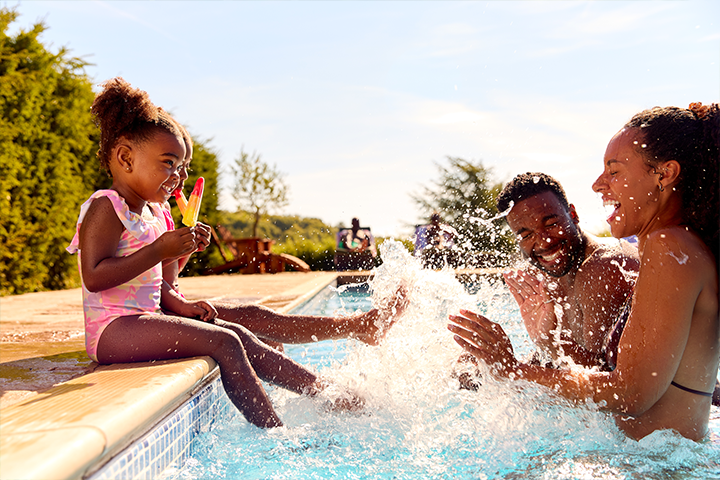Summer is here, which means millions of Texans will take a trip to the pool, lake, river, beach, water park, splash pad, or swimming hole to escape the heat.
We have 367 miles of beautiful Gulf beaches and 3,300 miles of bays and estuaries along the Texas coast. There are nearly 7,000 lakes in the Lone Star State, and more than 800,000 Texas residents or their neighborhood have pools.
Luckily, there are many ways to escape the heat; however, each has a hidden danger, especially for Texas children. In 2024, 103 Texas children fatally drowned. Yet drowning is preventable.
Drowning is the leading cause of death for children ages 1-4 years old and is the second leading cause of accidental death for older children ages 5-14. Boys are at a higher risk, especially in open water such as lakes or oceans.
Having fun while staying safe means learning the layers of protection to help prevent children from drowning. Adults are responsible for protecting children and educating Texans of all ages that water recreation comes with rules and responsibilities. Adopting practical, easy measures can ensure your family enjoys time around water and may save a life.

88% of child drownings occur with at least one adult present
Always designate an adult “water watcher.” This person is active, attentive, and continuously supervises the water. They vigilantly monitor the pool or lake by knowing how many children are in it and constantly scanning its surface. If anyone is under water for longer than 20 seconds, respond: drowning can happen in as few as 20 seconds!
50% of children drown within 25 yards of a parent or other adult
Teach children to wait for a grown-up. Reinforce the idea that adults must give permission to enter the water and that adults will be the water watchers while they are swimming.
70% of toddler drownings happen when the child isn’t expected to be in the water (non-swim time). Check the POOL first!
Keep fences and gates closed and locked at all times. Ensure the door closes behind you when you leave the pool and that the latch is at least 54 inches above the ground so little ones cannot access the pool when unsupervised. Remove any items around the pool that can be moved and used as ladders or step stools that a child can climb.
Because young children access swimming pools during unplanned swim times, installing pool safety covers or nets, pool alarms, and door/window locks and alarms is increasingly vital. Pool alarms or digital monitors installed in backyard pools can alert you when someone enters the pool. Many of these send an image to your phone, as a Ring camera does for deliveries to your front door.

These are a few tips to help you become a water safety champion. Learn the layers of protection and refresh your CPR skills if needed. Drowning is fast. Drowning is Silent. Yet, Drowning is Preventable!
Enjoy the Texas summer while staying safe!
Find free online materials to help educate you and your little ones to be safer around water. Here are a few recommendations:
“Do your part, be water smart!” is a campaign from the American Red Cross with activity sheets and videos to share. https://www.redcross.org/get-help/how-to-prepare-for-emergencies/types-of-emergencies/water-safety.html
The interactive, bilingual website www.drowningispreventable.org has fun lessons to teach children about the layers of protection, including the importance of waiting for a grownup.
Download the app or visit the website to read and listen to Josh the Baby Otter at bedtime: https://joshtheotter.org/ to remind children never to swim alone.